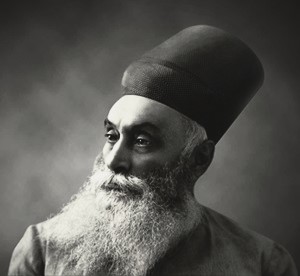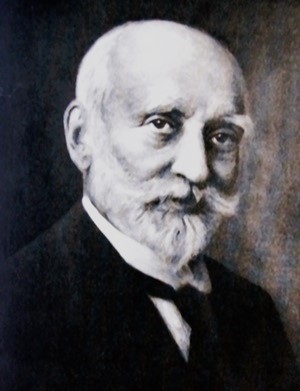Oct 17, 2025
Oct 17, 2025
150 Years of Vision, Innovation and Nation-Building
How does a single company leave an indelible mark on the fabric of a nation’s development? Can a business empire, founded in colonial India, continue to shape the contours of a modern economy, transcending generations? For the Tata Group, the answer lies in its enduring commitment to progress, innovation, and trust. But what is the story behind one of India’s most illustrious corporate legacies?
 The Tata Group’s journey began in 1868 with a young entrepreneur named Jamsetji Tata, who started a small trading firm in what was then Bombay (now Mumbai). With a meager capital of ₹21,000, Jamsetji embarked on a mission to create a business empire that would not only thrive in the commercial sense but also contribute to India’s broader socioeconomic development. Today, the Tata Group comprises 30 companies across 10 verticals, generating over $100 billion in annual revenue. But how did this extraordinary journey unfold? And what role did the Tata Group play in India’s industrial and national development?
The Tata Group’s journey began in 1868 with a young entrepreneur named Jamsetji Tata, who started a small trading firm in what was then Bombay (now Mumbai). With a meager capital of ₹21,000, Jamsetji embarked on a mission to create a business empire that would not only thrive in the commercial sense but also contribute to India’s broader socioeconomic development. Today, the Tata Group comprises 30 companies across 10 verticals, generating over $100 billion in annual revenue. But how did this extraordinary journey unfold? And what role did the Tata Group play in India’s industrial and national development?
The Inception: Jamsetji Tata’s Vision for India
It all began in the late 19th century when India was still under British rule. At a time when Indian enterprises were subjugated to colonial control, Jamsetji Tata envisioned an industrial revolution that would liberate the Indian economy and empower its people. He ventured into textiles, establishing Empress Mill in 1877, at a time when the industry was dominated by British enterprises. His aim? To create an Indian alternative to British goods, and, in doing so, foster self-reliance.
But Jamsetji's ambitions extended far beyond textiles. He dreamt of creating an iron and steel plant, generating clean hydro-electric power, and establishing a world-class educational institution dedicated to science and research. While these dreams did not materialize during his lifetime, his relentless pursuit of excellence laid the foundation for the Tata Group’s future successes.
 In the early 1900s, Tata Steel was born—a project that would later become the backbone of India’s industrial prowess. With its first plant established in Jamshedpur in 1907, Tata Steel became India’s first integrated steel plant, producing steel that would fuel the growth of modern infrastructure. Today, Jamshedpur remains a symbol of Tata’s industrial legacy and a testament to the foresight of Jamsetji Tata, who not only built factories but envisioned entire communities with schools, hospitals, and public spaces for the welfare of his workers.
In the early 1900s, Tata Steel was born—a project that would later become the backbone of India’s industrial prowess. With its first plant established in Jamshedpur in 1907, Tata Steel became India’s first integrated steel plant, producing steel that would fuel the growth of modern infrastructure. Today, Jamshedpur remains a symbol of Tata’s industrial legacy and a testament to the foresight of Jamsetji Tata, who not only built factories but envisioned entire communities with schools, hospitals, and public spaces for the welfare of his workers.
Dorabji & JRD Tata: Expanding the Empire
Following Jamsetji’s death in 1904, his elder son, Dorabji Tata, took the reins of the company. Under his leadership, Tata Iron and Steel Company expanded and evolved into a cornerstone of India’s industrialization. Dorabji also took the Tata brand global, setting up Tata Limited in London in 1907.
But perhaps the most transformative phase in the Tata Group’s history came under the leadership of Jehangir Ratanji Dadabhoy Tata, fondly known as ‘JRD Tata.’ Appointed as chairman of Tata Sons in 1938, JRD steered the group into new sectors, from aviation to automobiles, and from chemicals to hospitality.
 JRD’s passion for aviation led to the launch of India’s first commercial airline, Tata Airlines, which later became Air India. His vision for a world-class Indian automobile industry led to the creation of Tata Motors, a company that would revolutionize the way India moved. Meanwhile, under his stewardship, the group also expanded into chemicals, hotels, consumer goods, and software services—making the Tata Group a global conglomerate with interests in more than 100 countries.
JRD’s passion for aviation led to the launch of India’s first commercial airline, Tata Airlines, which later became Air India. His vision for a world-class Indian automobile industry led to the creation of Tata Motors, a company that would revolutionize the way India moved. Meanwhile, under his stewardship, the group also expanded into chemicals, hotels, consumer goods, and software services—making the Tata Group a global conglomerate with interests in more than 100 countries.
Nation-Building: The Tata Group’s Role in India’s Development
Beyond business, the Tata Group has always been synonymous with nation-building. Jamsetji Tata believed that “what advances a nation is not so much to prop up its weakest members, but to lift up its best and most gifted.” This philosophy manifested itself in numerous philanthropic initiatives that have left a lasting impact on India’s development.
One of Jamsetji’s most remarkable contributions was the establishment of the Tata Endowment Fund in 1892, which provided scholarships to Indian students pursuing higher education abroad. This initiative laid the foundation for what would later become the Tata Trusts, which today control 66% of Tata Sons and channel profits back into the community. The trusts have been instrumental in funding education, healthcare, rural development, and scientific research across India.
JRD Tata continued this legacy of giving, spearheading the creation of institutions such as the Tata Institute of Fundamental Research (TIFR), the Tata Memorial Hospital, and the Tata Institute of Social Sciences (TISS). These institutions have been critical to India’s advancements in science, healthcare, and social development.
Ratan Tata: A Global Visionary
 If JRD Tata made the Tata Group an Indian giant, it was Ratan Tata who propelled it onto the global stage. Taking over as chairman in 1991, Ratan Tata’s leadership coincided with India’s economic liberalization. Under his guidance, the group embarked on a series of high-profile acquisitions that made headlines worldwide. In 2000, Tata Tea acquired the UK-based Tetley Tea. In 2007, Tata Steel acquired the Anglo-Dutch steelmaker Corus, and in 2008, Tata Motors purchased Jaguar Land Rover from Ford, transforming the group into a global conglomerate.
If JRD Tata made the Tata Group an Indian giant, it was Ratan Tata who propelled it onto the global stage. Taking over as chairman in 1991, Ratan Tata’s leadership coincided with India’s economic liberalization. Under his guidance, the group embarked on a series of high-profile acquisitions that made headlines worldwide. In 2000, Tata Tea acquired the UK-based Tetley Tea. In 2007, Tata Steel acquired the Anglo-Dutch steelmaker Corus, and in 2008, Tata Motors purchased Jaguar Land Rover from Ford, transforming the group into a global conglomerate.
But Ratan Tata’s most iconic contribution to the Indian landscape was perhaps the launch of the Tata Nano in 2008—the world’s most affordable car, aimed at making car ownership accessible to millions of middle-class Indians. Though the Nano did not achieve commercial success, it remains a symbol of Tata’s commitment to innovation and inclusivity.
Innovation, Sustainability & the Future
Today, the Tata Group stands as a towering figure in the global business landscape, with interests spanning everything from steel and automobiles to IT services and renewable energy. Tata Consultancy Services (TCS), which started as a fledgling IT services company in 1968, is now one of the largest IT services companies in the world, providing cutting-edge technology solutions to businesses across the globe.
The group’s emphasis on sustainability is also notable. Tata Power is at the forefront of India’s renewable energy revolution, while the group’s investments in electric vehicles (through Tata Motors) and green technologies signal its commitment to building a sustainable future.
The Tata Legacy: Where Next?
As the Tata Group continues to grow and evolve, the question arises: what’s next for this iconic institution? Will the Tata Group’s future be shaped by the same values of trust, innovation, and nation-building that have defined its past? And can it continue to drive India’s growth story in an increasingly competitive global economy?
What does the Tata Group’s story tell us about the power of vision, perseverance, and philanthropy in shaping not only a business empire but also an entire nation? How will this legacy continue to unfold in the years to come?
The Tata Group’s journey is far from over. As it continues to innovate and expand, the world watches closely — wondering what the next chapter in this extraordinary story will be.
26-Oct-2024
More by : P. Mohan Chandran

|
Good article |